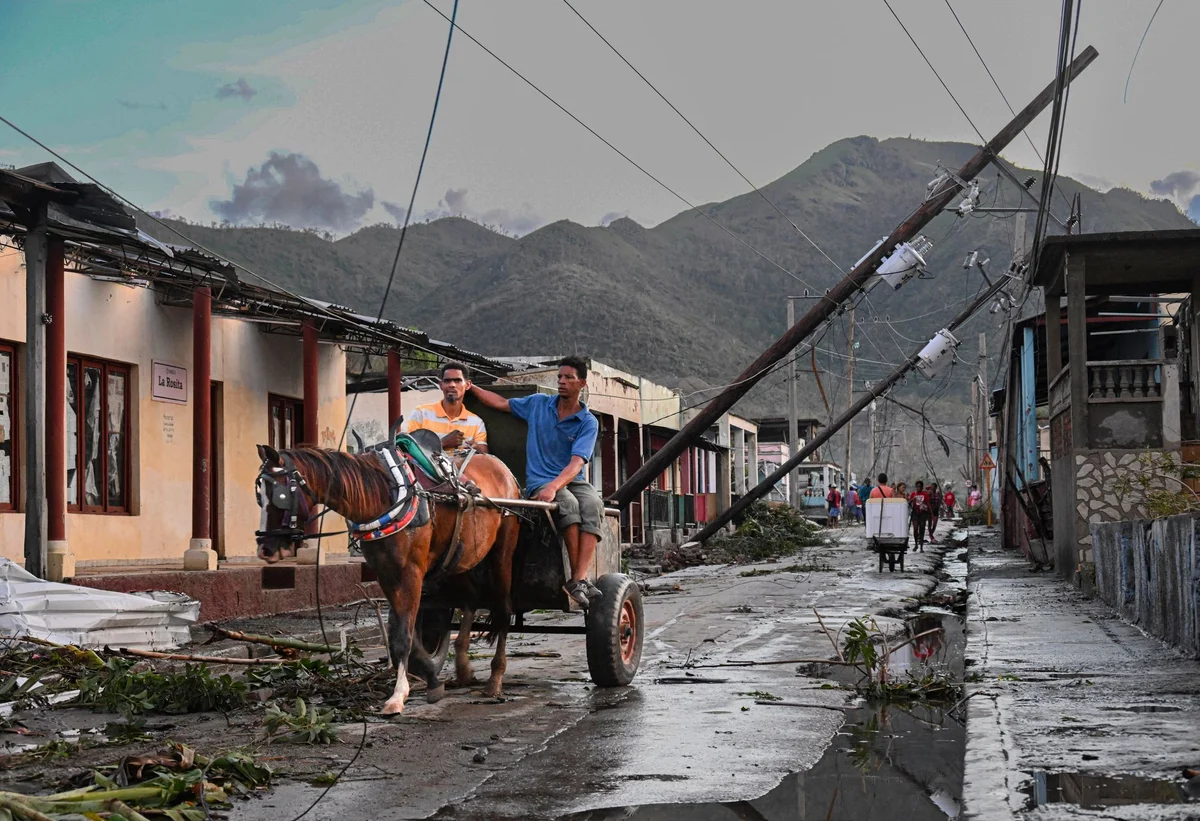Copyright independent

Leaders from across the world are flying in to the Northern Brazilian city of Belém, ahead of the Cop30 climate conference. As happens every year, a key a subject that will be raised by the world’s poorest and most climate-vulnerable countries will be the paltry level of finance that rich countries make available as aid to address the climate crisis. But on the eve of those discussions, a leading expert on the negotiations has told The Independent that it is not only the amount of climate finance available that continues to be a major problem, but also the accessibility of the available money, given the needs and capacities of the world’s least developed countries. Gebru Endalew is a former chair of the Least Developed Countries (LDC) group – a negotiating group at the UN comprised of the world’s 44 least developed countries – and current technical lead at LIFE-AR, which is an initiative helping developing countries become more climate resilient. In that position, he has advised countries including Uganda, Malawi, Ethiopia, Bhutan and the Gambia to apply for climate finance, which is climate-focused aid money that countries use to decarbonise or adapt to climate change. Decarbonisation efforts could include renewable energy projects like a wind or a solar farm, while a climate adaptation project could be everything from an irrigation system to protect a community from droughts, to the planting of mangrove forests to prevent coastal erosion. For most low income countries, climate finance is accessed via a number of “climate funds”, which wealthy countries like the UK, Germany, and – until this year – the US have contributed towards. The largest climate fund is called the Green Climate Fund, which now has a portfolio of projects worth $19.3bn (£14.7bn). According to Mr Endalew, however, the funds are hard for poorer nations to apply for due to their bureaucratic processes - and the length of their processes mean that sometimes by the time a grant is provided, the nature of the challenge it was supposed to assist with has often changed. “Projects are delayed and delayed due to slow approval and review processes, in which time governments will try and address the problem themselves with limited resources, putting up their debt in the process,” he said. “Oftentimes the reviewer might not be an expert in the country or region, which can slow things down further – then by the time the money is approved, the problem has changed or worsened, so that the government then needs to reshape the proposal and it requires even more money,” Mr Endalew added. Over-stretched civil services in low income countries also struggle with the bureaucratic processes, as well as the monitoring that is required once funding has been approved, Mr Endalew said. When some of these accessibility concerns were raised with him by The Independent, David Moinina Sengeh, Chief Minister of Sierra Leone said that his country had faced struggles accessing climate finance, describing the situation as “counter-intuitive”, given the fact that it is countries such as his that require it the most. “It shows in many ways why we need to reform our multilateral institutions, so that they become fairer and more inclusive,” Sengeh says. Michael Jacobs, visiting senior fellow at think tank ODI Global, agrees with Mr Endalew that the capacity of low income countries to deal with bureaucracy is a big problem. “There are a few main ones - but something like 90 different climate funds overall, and each has its own different bureaucratic system through which you need to apply,” he said. “It's much easier for a wealthier country like Brazil to access this money, because it has a big civil service and is highly trained. But for a country like Uganda, with a much smaller civil service that is already overstretched, it is a very big challenge to apply,” Mr Jacobs added. For Tracy Kajumba, a researcher at the International Institute for Environment and Development, current financing dynamics are “a total mess”. “When it does get through, climate finance tends to put funders’ short-term priorities above what communities need,” she said. “There’s rarely an emphasis on people’s ability to live with climate change in the long term, or on building the capacity of recipient governments to support them.” The layers of bureaucracy and oversight between the grant giver and the actual project on the ground means that often only a small fraction of the money actually reaches the projects that require climate finance, according to Mr Endalew. “There are often so many intermediaries, who will all have a service charge, which means that typically only 15 to 20 per cent of the money actually reaches the project on the ground,” he added. The difficulties come despite the fact that these funds are supposed to be as accessible as possible for lesser-developed countries, given the difficulties that they face attracting other forms of investment. Experts also agree that the amount of climate finance available is hugely insufficient in comparison to the problem: Finance available for developing countries to adapt to climate change actually fell from $28 billion (£21bn) in 2022 to $26bn in 2023, according to UN figures published recently – with the money required to adapt to increasing climate impacts 12- to 14-times greater than what is available. This lack of money from rich countries is also a key reason why processes to supply climate finance are so delayed and bureaucratic, according to Mr Endalew. “If there was a real commitment to replenishing the funds from rich countries, I think, there would be less bureaucratic systems as there would be less pressure to withhold the available resources,” Mr Endalew said. It is also “obvious”, he added, that cuts to overseas aid budgets announced this year are going to have a major impact on efforts to boost climate finance. Cuts from the US included President Trump rescinding $4bn that was pledged to the Green Climate Fund. Questions around the amount and the accessibility of climate finance will be one of the main focuses as Cop30 kicks into action in Belém. Last year, when Brazil hosted the G20 presidency, the country published a report highlighting the need to improve the accessibility of climate finance, and offering advice on how to improve processes. The report focused on the Green Climate Fund, the Adaptation Fund, the Climate Investment Funds, and the Global Environment Facility. All four of those funds were contacted by The Independent regarding the claims made here. A spokesperson for the Adaptaion Fund said: “The AF also has robust climate finance readiness programs that help countries build their capacities to develop effective projects, and also offers innovative streamlined accreditation processes for smaller countries including that may not otherwise have access to climate finance. “Additionally, the AF funds the full cost of adaptation through grants, and has opened several additional funding windows that empower locally led adaptation and a broad range of local actors to develop projects directly. It is continually growing and offering new opportunities for countries as well as striving to enhance funding access further.” This article was produced as part of The Independent’s Rethinking Global Aid project



